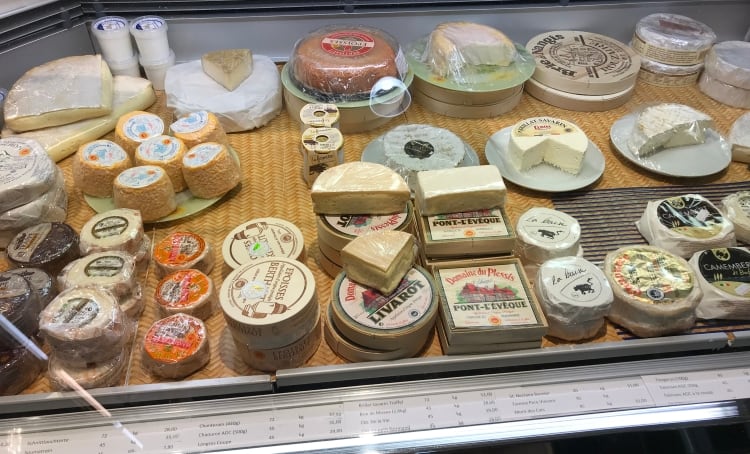The development of products with health benefits is a key research priority for the food sector, providing an opportunity for the dairy industry as the global market of functional foods is expected to grow rapidly over the coming years.
In an Italian study, published in December’s Journal of dairy Science, 58 potentially probioticLAB were tested for their ability to survive in vitro digestion and reduce cholesterol in a medium containing cholesterol and bile acids.
The authors note that plant stanols and sterols, which lower serum concentrations of cholesterol, have been incorporated into foods, but they are expensive. Over the years, the probiotic activity of LAB has been studied, and LAB have been associated with improved lactose intolerance, increased natural resistance to infectious disease in the gastrointestinal tract, the suppression of cancer, and better digestion and skin health.
Other studies have shown some LAB can lower total cholesterol and low-density lipoprotein cholesterol levels. Raw milk cheeses represent a notable source of wild LAB strains that can have health-promoting properties in addition to giving the cheese its unique characteristics, the researchers said, adding that dairy products such as cheese and dairy-based desserts are excellent natural and clean-labeled delivery systems for probiotic inclusion in the diet.
However, the authors note, few attempts have been made to use LAB to reduce cholesterol in foods, particularly in dairy products, as a potential alternative to the more expensive chemical and physical processes, which can lead to texture alteration and flavor removal.
Study details
The best-performing strains, showing the ability to reduce cholesterol in vitro more than 40% (an arbitrarily chosen threshold), were further tested in cheese-making trials in addition to the starter culture. To prepare the inoculum for cheese-making, the strains were inoculated in UHT caprine milk, incubated at 30°C for 18 h, and added to vat milk to a final concentration of approximately 107 cfu/mL.
Experimental cheese-making trials were conducted by Il Boscasso cheese factory (Ruino, Pavia, Italy). Each experiment consisted of a control vat and vats inoculated with single adjunct LAB cultures. Briefly, the vat containing 10 L of goat raw milk (3.5% fat; wt/wt) was warmed to 34°C.
Fifty-eight LAB strains belonging to six species usually involved in cheese production as starter or adjunct cultures were evaluated for their cholesterol-lowering potential.
Seven strains of the 58 tested demonstrated the highest removal ability in MRS/M17 broth supplemented with cholesterol and bile salts, giving rise to a noteworthy reduction of the cholesterol level in broth, ranging from 42 to 55%. The strains included cocci and rods belonging to different species: 1 Lb. casei (VC199), 2 Lb. paracasei ssp. paracasei (SE160 and VC213), 2 Lb. plantarum (VS166 and VS513), 1 E. lactis (BT161), and 1 E. faecium (VC223).
The seven best-performing LAB survived in the cheese to sufficient numbers (higher than 108 cfu/g) to potentially deliver the probiotic effect. The researchers also stated all the strains appeared stable and vital after 24 h of incubation in the presence of bile salts and under conditions mimicking the gastrointestinal tract.
The survival and growth of LAB that assimilate cholesterol in the intestine are important in that it decreases dietary cholesterol absorption from the digestive system into the blood and could thus have the potential to aid in the control of serum and liver cholesterol.
The experimental data available indicate the constant consumption of probiotics can effectively reduce serum cholesterol by more than 1%, the authors said, thus encouraging the development of new functional foods as complementary therapy.
They add that cheese and dairy products are efficient food carriers for probiotics because of their high fat content and their high buffering capacity that enhances bacterial survival through the intestinal tract.
Potential for strains
The researchers said their results demonstrate that the seven potential probiotic LAB strains possess desirable properties in terms of cholesterol-lowering activity, opening the way to their incorporation into novel functional foods.
The authors said they could be used for the production of probiotic cheese and other dairy products such as fermented milk or a dairy dessert with reduced cholesterol content and with interesting functional properties.
Further studies are needed not only to explore the mechanisms by which LAB strains modulate hypocholesterolemic effects, but also for a proper safety assessment to prevent potential adverse reactions, the authors said.
They add in vivo studies are needed to generate more direct evidence of the cholesterol-lowering clinical efficacy of strains as a probiotic formulation or as a fermented milk or cheese, and in vivo studies could also be used to evaluate the effective dosage and frequency of treatment required to exert hypocholesterolemic effects.
Source: Journal of Dairy Science
Lactic acid bacteria with cholesterol-lowering properties for dairy applications: In vitro and in situ activity
Authors: C. Albano, S. Morandi, T. Silvetti, M.C. Casiraghi, F. Manini, M. Brasca

